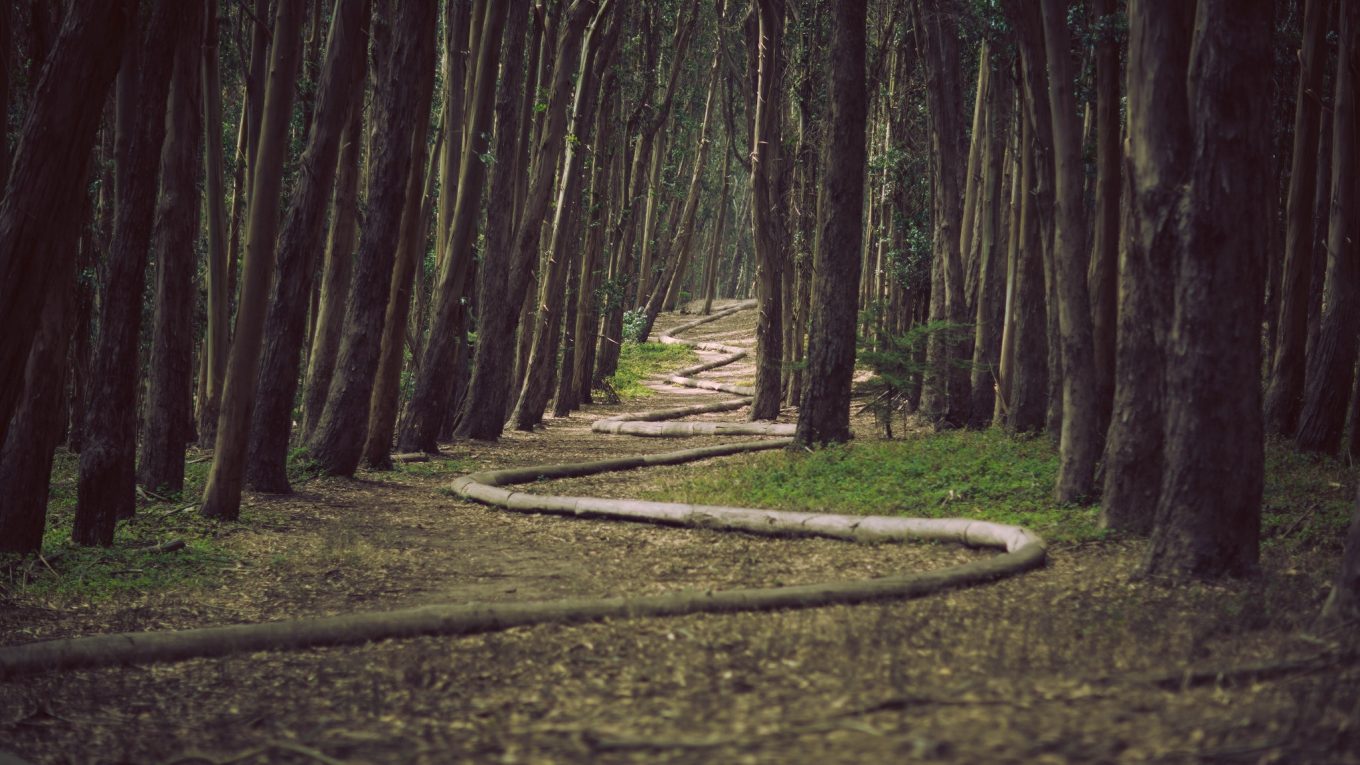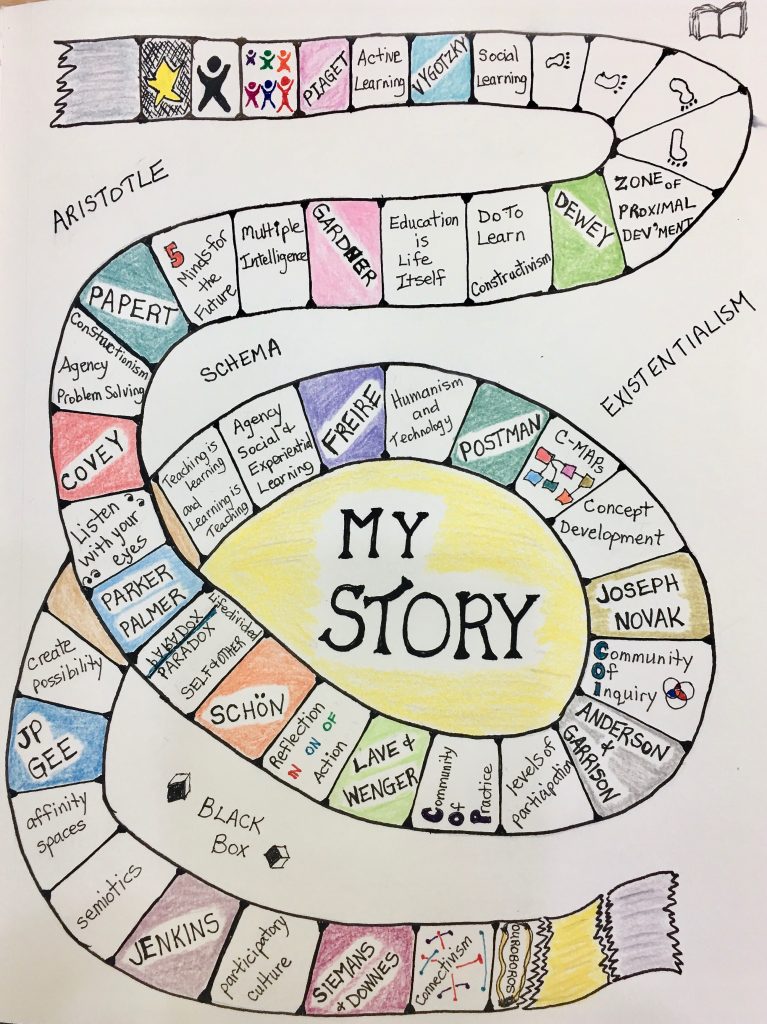Going Back to Go Forward
I’m going back to the drawing board! I may be going back, but I’m not going alone. Every time I go back to retry something, I’m going back with lessons learned along the way. As I go back to revise my first try, those lessons learned help me move forward, changing my thinking, and shifting the ‘going back’ into a reflexive prerequisite for personal development and making progress.
This is true for the first review of my draft proposal for the academic paper being written for the Doctoral Seminar 1 course. It’s necessary to go back to the drawing board after feedback, insights, and probing questions from my instructor and others in my class, as well as time for reflection. I’m going back to the sources to find and name those key researchers in the areas that support my writing. My thinking has changed and my focus has shifted, so the starting point, and steps back to where I am, will be reflective of my learning.
It’s become incredibly clear that developing a deep, rich genealogy of research in my field of study is an essential going-back-to-go-forward activity. Part of going back is reviewing the references and resources to learn more. This isn’t merely building a Zotero collection of references or creating an annotated bibliography of articles and readings. I need to construct a family tree – a graphic model of key thinkers in my field of study, similar to ones created in the Masters of Educational Technology (MET) 512 course.
But I also need to think outside the narrow spaces of my own research and connect a collaborative tree of multiple fields with multiple theorists to stretch my thinking and expand my range. I need to think in timelines and interactions between and among theorists, researchers who are outstanding in their fields of study, such as those on the Canada Council Research panel. While my ‘snake story’ (see image below) provides some pinpoints on my academic journey, these require deeper reading to build understanding. Going back into the research has merit and value because it informs my going forward. But the potential of doing this together, in collaboration with my classmates, will further each of our research endeavours.
The need for a rich, wide reference bibliography became abundantly clear this past week in a few ‘aha’ moments. The presentation by Dr. Amy Farrell Morneau prompted this reflection in my research journal with This Thing Goes Here!:
“In the end, it can be, as Dr. Amy Farrell Morneau noted in class, a way to find a novel way of doing things and that’s okay! I need to discover where to say, NO – this theory or methodology doesn’t fit for me, it won’t help me make sense of what I’m hoping to research, it can’t get me closer to understanding the core beliefs about where my research is located. But, it’s equally important, as Pratt (2008) contends, to be okay in the tension between qualitative and quantitative research, between story and study. It doesn’t need to “be an issue of ‘either or’, but an issue of ‘both-and’” (p. 505).”
Having an effective annotated bibliography was part of my reflection in Taking It One at a Time:
“It’s a problem for most academics. Too many readings, too many writings, to many other voices within the field of study and a multiplicity of voices from without! While it’s an exciting experience to be reading and capturing these readings with a four sentence summary within an annotated bibliography, it’s also a daunting task as a novice academic. So, I’m taking it one at a time.
I’m not new to the reading part. I’ve been a voracious reader from the start. My Good Reads collection verifies and quantifies my reading interests and practice. However, I am new to the summarizing what I’ve read – taking a document and drilling down to the essential bits in order to create a snapshot of that article. As part of this process of annotating and capturing the ‘image’ of what was written, I’m also capturing key quotes, key terms, and interesting connections that come from these readings. On occasion, I draft an icon or sketch to compliment and deepen my understanding of the material.”
As I continue to explore the foundational theorists and thinkers in education, I consider that I’m not alone. Others in my cohort are also going back to move forward. If I’m taking it one at a time, so are others in my class. After some shared conversations at dinner last night, I realize the potential of open collaboration, so we can all benefit from the work done, in the end. Speakers have talked about the importance of networking, so I’m looking forward to the potential of tools and strategies that can support the way we, as a cohort of researchers, can network as a group. I reflected about this in Openly Collaborative:
“I had started collecting references in Zotero, a reference and bibliography tool, before starting this course, so was well positioned to begin gathering research voices into my draft proposal for my academic paper. What I realize, based on feedback and focused questions from my instructor and classmates, during today’s open sharing of my draft, was the need to go further, beyond only my area of interest and potential methodology. I’ll need to go wide and deep in my search for credible voices in a variety of areas. The potential for collaboration and sharing as I build my resource collection is a real and necessary consideration. The power and potential of networked, connected research, starting with my cohort colleagues, is exciting.”
By looking back, collectively and collaboratively, this cohort can build our understanding of the foundational theorists in the field of education. We can move forward, stronger, with each other.
My Story is a looping ‘snake-like’ image, representing theorists and ideas that shape my thinking.
My Story (image) is hand drawn and photographed as part of the multi-modal component of this assignment submission. It is also posted to Flickr.
The second element is this Mindomo concept map which is openly shared with others in the class where we can collaborate on theorists together, modelled on the Constructivism concept map (which is also posted to Flickr) from MET 512.
Image attribution: Photo by James Forbes on Unsplash

